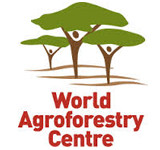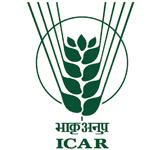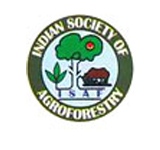
Vigyan Bhavan & Kempinski Ambience
10 - 14 February 2014
Delhi, India
blog

Insect-pests of agricultural crops is always been troubling our farmer friend. Our important paddy crop is highly infested by insect-pests. Chemical Insecticides are syringe to control them, but shows a short term benefits and due to regular insecticide application pest come up with their negative role, develops resistance and facilitate outbreaks of secondary pests. Also insecticides they pollute our lovely environments. So the alternatives to overcome the hazardous effect of chemical pesticides are use of organic substances and bio-control agents. I suggest my lovely friends ‘Birds’ as bio-control agents.
The birds’ dual role of benefactors and destroyers in agriculture is very well known. Most of the birds play a useful role in agriculture by decreasing the number of insect and other pests. Insectivorous and carnivorous species are considered to be useful to agriculture since they keep a very potent check on populations of insect and rodent pests of crops, one of the amazing example is owls, one owl patrol over 40 hectare of agricultural land and help in controlling rodents, but some of the granivorous and frugivores birds substantially reduce the agricultural production e.g. Rose-ringed Parakeet.
The intensively cultivated farms along with a variety of native and exotic agroforestry trees provide additional food to birds in the form of fish, bees, animal feeds, tree-fruits, seeds, nectar etc. So the birds of all feeding guilds like granivores, frugivores, insectivores, carnivores, nectarivores and omnivores are found in agricultural area. In our study what found was very interesting.
Paddy fields with different tree density on its bunds against paddy field without trees were considered for comparison. The difference taking place only due to presence of trees and not by their density was amazing. Over all birds recorded were 71 in number, 31 species of birds were recorded in plot without trees and 65 species of birds were recorded in plot with trees. Interestingly, 40 additional species of birds were only found in plot with trees. From this it was clear that tree density or habitat heterogeneity on paddy fields enhances the bird species richness. In case of feeding guilds of 71 birds recorded overall, 21 each were omnivorous and insectivorous, 15 Carnivorous, 12 granivorous and 2 Nectarivores. It was interesting to see that the feeding guilds also strengthened in the high tree density plots. When it was looked in terms of beneficial (i.e. Omnivorous, insectivorous, carnivorous, nectarivores) birds, plot without tree yielded 6 species while plots with trees had 16 additional species. Numbers of beneficial birds were more than the potentially harmful granivorous birds in plot with trees.
Moreover, Agroforestry improves the heterogeneity on the farmland and provides more niche spaces for birds. Agroforestry is a land-use pattern that helps to conserve biodiversity; attracts organisms that are beneficial to farming like pollinators, insectivorous birds; improves farm by reducing soil erosion and is economically beneficial to farmers. Human activity specifically habitat destruction have dramatically increased rates of biodiversity loss. In order to overcome this problem it is very important to identify the reasons of destruction and to come out with solutions to maintain farmland biodiversity.
I strongly promote agroforestry system and organic farms to support birds and obtain their services. Lastly I invite Egrets, Mynas, Crows, Bee-eaters, Drongo, Shrike, Kingfisher, Swallows, Swifts, Rollers, Coucals, Lapwings, Koel, Robins, Babblers, Thrush, Raptors, and Waders for their day meal and Owls for dinner at my field with all boarding facilities- roosting, nesting and perching.
Blogpost and photo by Jyothi Krishnan Mandan, Ph.D. (Wildlife Sciences), College of Forestry, Vellanikkara, Kerala Agricultural University (Thrissur, Kerala, India) – jyokrish25(at)gmail.com
|
This post is entry nr #46 in our #WCA2014 blog competition. The five blogposts with the most and highest votes will receive a signed copy of the book "Trees for Life". The most popular blogpost will get an iPad.
This blogpost received 73 votes, with an average score of 4.5 (out of a max of 5).
Follow our #WCA2014 social reporting teamfollow our social reporting team via the #WCA2014 tag on Twitter, our blog and our Facebook page.
|






30 People have left comments on this post
congrats mam, its really good.
very nice efforts to maintain ecosystem, well done.
good effort………nicely organised………come up well……all the best
excellent story!
dear jyothi, good work..let’s welcome the winged masters to our fields…Go green,for a green and clean world
Awesome quote jyoti …..keep it up
welcome to polachira____
Good effort…:)..save nature..save birds..:)
Noble cause get going…lets save them
awesome
out standing
good job
keep it up
Dear Jyothi,
Its nice concept of research to promote agroforestry linking role of avifuna. Certainly birds play mutliferous role in farm provided they get habitat for them. As you observed increase in birds diversity in farms with more trees or agroforests it support the tree based farming. As you seen in paddy field, is there same pattern whole season or with crop variation changes the preference? good efforts– nice and suggests see the ICAR AICRP on ornithology for review and further studies.
I once again appreciate your efforts and good luck.
Revived a good idea!! good efforts to to promote agroforestry linking role of avifuna.
nice
very nice good effort all the best
good …. keep it up …. !!!!!
Where empathy and ecology matches so subtly and entirely
Nice
Very good efforts….
Good luck !!!
nice
A perfect way to keep our natural system into balance nice work jyothi
Nice and simple .. Well said
very nice job…………..
Very Good Jyothi Didi……..
SAVE THE BIRDS
Congratulations. Very good work. Wish you best of luck.
Every living being has got its role.
Yours is another proof,
Congratulation!
Its a ecofriendly agro farming, concept note is very good.
Go ahead best luck
rathod
Dont scare away the birds back. welcome more and more birds to fields
Congratulations.
Great Effort and Hardwork.
Keep it up.
Good Luck.
Good..:)
very inspiring way to grow food under the agro-ecosystems approach!